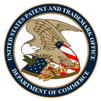Mission and Organization of the USPTO
Mission Statement
The USPTO's mission is to ensure that the Intellectual Property system contributes to a strong global economy, encourages investment in innovation, and fosters entrepreneurial spirit. Intellectual property is an invention or creation embodied in the form of a patent, trademark, trade secret, or copyright.

Interior of the Madison Building's glass atrium.
For over 200 years, the basic role of the USPTO has remained the same: to promote the progress of science and the useful arts, by securing for limited times to authors and inventors the exclusive right to their respective writings and discoveries (Article 1, Section 8 of the United States Constitution). American industry has flourished under this system of protection as new products have been invented, new uses for inventions have been discovered, and employment opportunities have been created for millions of Americans. Customers have been protected against confusion and deception in the marketplace, and businesses have been given the enhanced protection of trademark rights and notices of the trademark rights claimed by others. Patents and trademarks have long protected American creativity and ingenuity. The first patent was issued in 1790 for a method of making potash fertilizer and the oldest active trademark was originally registered in 1884 for SAMSON, a design for "cords, lines, and ropes."
The strength and vitality of our economy depends directly on effective mechanisms that protect new ideas and investments in innovation and creativity. The continued demand for patents and trademarks underscores the ingenuity of American inventors and entrepreneurs. The USPTO is at the cutting edge of our nation's technological progress and achievement.
The primary services provided by the USPTO are examining patent and trademark applications and disseminating patent and trademark information. Through issuing patents, we encourage technological advancement by providing incentives to invent, invest in, and disclose new technology. Through registering trademarks, we assist businesses in protecting their investments, promoting quality goods and services, and safeguarding consumers against confusion and deception in the marketplace. By disseminating both patent and trademark information, we promote a global understanding of intellectual property protection and facilitate the development and sharing of new technologies worldwide.
Location, Organizational Structure, and Workforce

View of the USPTO headquarters from Dulany Gardens.
The USPTO is an agency of the United States within Department of Commerce. In FY 2005, USPTO successfully completed its move to its new facility in Alexandria, Virginia. In addition, USPTO has two storage facilities in Alexandria and Springfield, Virginia, and leased storage space in Boyers, Pennsylvania. The USPTO workforce is comprised of 7,363 federal employees, including 4,258 patent examiners and 357 trademark examining attorneys, and 3,687 contract employees.
The USPTO has evolved into a unique government agency. Since 1991—under the Omnibus Budget Reconciliation Act (OBRA) of 1990—the USPTO has operated in much the same way as a private business, providing valued products and services to its customers in exchange for fees that are used to fund its operations. The USPTO is lead by the Under Secretary of Commerce for Intellectual Property and Director of the USPTO who consults with the Patent Public Advisory Committee and Trademark Public Advisory Committee. The USPTO has two major business lines – Patents and Trademarks – as shown in the following organization chart:


